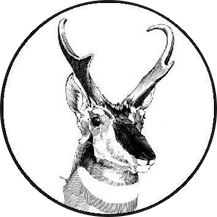- Giorgia Auteri (University of Michigan; Ph.D.). More than skin deep: testing physiological and genomic shifts in little brown bats (Myotis lucifugus) in response to white-nose.
- Felix Baier (Harvard University; Ph.D.). Evolution and neurobiology of defensive behavior against visual threat in deer mice.
- Emily Beasley (University of Vermont; Ph.D.). Does ectoparasite life history influence occupancy at varying organizational scales?
- Hailey Boone (State University of New York; Ph.D.). Potential mesopredator release of Isle Royale red foxes.
- Ben Borgmann-Winter (University of New Hampshire; M.S.). Small mammals as forest architects: exploring the role of rodents in mycorrhizal mushroom dispersal.
- Elaine Brice (Utah State University; Ph.D.). Understanding the cascading effects of wolves on aspen in northern Yellowstone National Park.
- Raylenne da Silva Araujo (National Institute for Amazonian Research; Ph.D.). Impacts of Santo Antonio hydroelectric on small non-flying mammals assemblage on Madeira River, Amazon.
- Caylee Falvo (Montana State University; Ph.D.). Novel methods to measure the immune status of bats, critical viral reservoirs.
- Adriana Guerrero Chacon (University of Saskatchewan; Ph.D.). Individual variation in daily energy expenditure during lactation in Columbian ground squirrels (Urocitellus columbianus).
- Deborah Hawkshaw (University of Saskatchewan; M.S.). Sex-specific effects of body condition on hibernation expression and reproduction in Canadian black-tailed prairie dogs.
- Sarah Heissenberger (University of Arkansas; M.S.). Investigating ultimate & proximate causes of social instability via water availability and stress physiology in Octodon degus.
- Gabriela Heyer (University of Saskatchewan; M.S.). Local adaptation in hibernation phenotypes of Columbian ground squirrels (Urocitellus columbianus).
- Molly Hirst (University of Michigan; Ph.D.). Sperm morphological divergence and its influence on reproductive isolation in a natural primate hybrid zone.
- Rachel Kanaziz (Colorado State University; M.S.). Does maternal stress drive daughter dispersal in an asocial mammal?
- Abigail Kelly (University of Cincinnati; Ph.D.). Testing dietary stress as a contributor to end-Pleistocene horse extinction in North America.
- Molly McEntee (Georgetown University; Ph.D.). Cooperative female defense against male harassment and sexual coercion in Indo-Pacific bottlenose dolphins.
- Ellen Michels (Northern Michigan University; M.S.). Molecular and morphological consequences of post-glacial contact among lineages of northern short-tailed shrews (Blarina brevicauda) in eastern North America
- Kendall Mills (University of Alaska Fairbanks; Ph.D.). Melanistic hoary marmots: a model for improved immune function.
- Kirby Mills (University of Michigan; Ph.D.). Water-driven competitive overlap in an endangered large carnivore community.
- Francisco Molina (University of Wyoming; Ph.D.). Resource availability as a driver of behaviorally mediated trophic cascades in the Patagonian Steppe.
- Rachel Nelson (George Washington University; Ph.D.). Water stress and behavioral adaptations to lactation in wild chimpanzees (Pan troglodytes).
- Emily Nonnamaker (University of Notre Dame; Ph.D.). Do microbes contribute to olfactory signals of ovulation in baboons? Elizabeth Horner Award recipient.
- Shannon O'Brien (University of California Berkeley; Ph.D.). Disentangling the effects of sociality and kinship on gut microbial diversity in a facultatively social rodent.
- Anna Penna (University of Texas San Antonio; Ph.D.). How many babies in the bush? Systematics of cryptic dwarf bushbabies (Galagoides spp.).
- Erin Person (University of California Berkeley; Ph.D.). Impact of social behavior on the gut microbiome of a free-living mammal.
- Imran Razik (Ohio State University; Ph.D.). Neuroendocrine basis of cooperative behavior in the common vampire bat.
- Zoë Rossman (University of New Mexico; Ph.D.). Resource partitioning and individual specialization in a community of urban carnivores.
- Rebecca Smith (University of Saskatchewan; M.S.). Mechanisms of climate-mediated effects on intraspecific torpor profiles in Columbian ground squirrels (Urocitellus columbianus).
- David Sneddon (University of Idaho; Ph.D.). Genomic islands of divergence in red-tailed chipmunks (Tamias ruficaudus) across differentially aged hybrid zones.
- Samantha Stead (University of Toronto; Ph.D.). Allomaternal care and female reproduction in Angolan colobus mothers.
- Rachel Stein (University of Idaho; Ph.D.). Applying laser technology to novel measures of wildlife habitat.
- Isabel Sullivan (University of Maryland, College Park; M.S.). Life by the numbers: Epigenetic effects of hibernation in the big brown bat.
- William Thomas (Stony Brook University; Ph.D.). Epigenetics of a unique wintering strategy.
- William Weber (University of Maryland; Ph.D.). Understanding how social dynamics drive variation in male fertility.
- Kwasi Wrensford (University of California Berkeley; Ph.D.). The role of phenotypic plasticity in population response to environmental change.
- Xueling Yi (University of Wisconsin-Milwaukee; Ph.D.). Evolution, diversity, and conservation of North American biota – a case study using phylogeography in the big brown bat.
